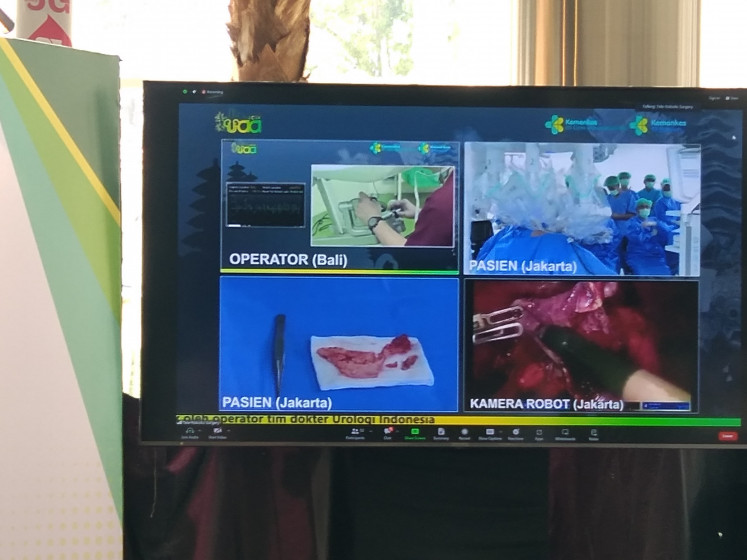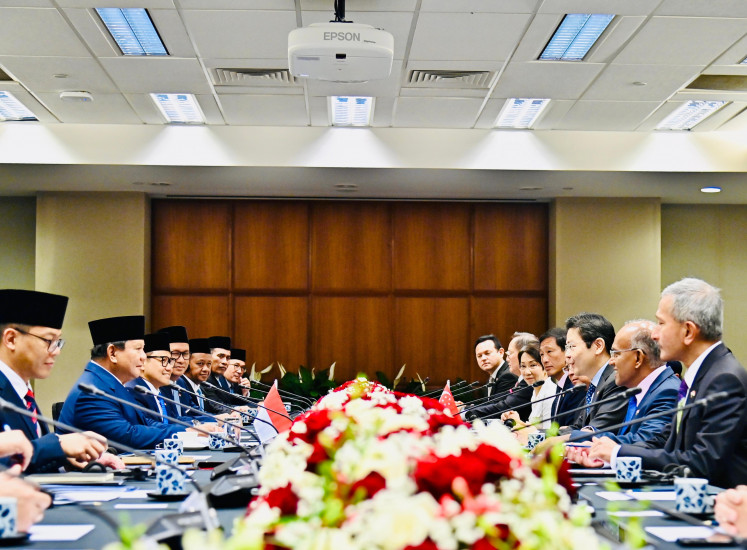Popular Reads
Top Results
Can't find what you're looking for?
View all search resultsPopular Reads
Top Results
Can't find what you're looking for?
View all search resultsBancassurance in Southeast Asia: The $114 billion opportunity
Southeast Asia presents a substantial opportunity for bancassurance in unlocking significant value over the next four years on the back of a post-pandemic surge in demand for comprehensive, tailored insurance policies.
Change text size
Gift Premium Articles
to Anyone
 Stock illustration of home insurance (Shutterstock/thodonal88)
Stock illustration of home insurance (Shutterstock/thodonal88)
A
ccording to the recent Boston Consulting Group (BCG) report, Bancassurance in Southeast Asia, there is significant value to be unlocked in developing insurance markets over the next four years, with gross written premium (GWP) projected to reach US$114 billion as resurging post-pandemic demand drives a buoyant insurance industry.
This substantial opportunity is underpinned by three key opportunity drivers.
One, customers are increasingly recognizing the benefits of one-stop shop financial solutions while maintaining traditional trust in bankers as financial advisors. Two, the customer base is expanding, with banking penetration in Southeast Asia increasing from 36 to 62 percent over the last decade. And three, banks are realizing the benefits of growing a diversified revenue stream for greater financial stability.
Still, there are a number of challenges to navigate. Incidents of mis-selling have spurred new regulations, forcing bankers to upgrade advisors and sales processes. Changing channel usage has shifted engagement from the physical into the digital realm. Rising interest rates have changed industry dynamics as banks reset priorities back to traditional products, such as loans and credits.
The BCG report notes that in this complex and changing landscape, Southeast Asian players have a particularly powerful opportunity to unlock value.
What success could look like
For leading European banks, bancassurance contributes 30 percent of earnings before tax (EBT), while it contributes around 20 percent EBT in Latin America and just 7 percent EBT in Southeast Asia. This highlights substantial room for growth.
If Southeast Asia echoes the evolution of more mature banking markets, insurance sales will become a major focus of regional players. BCG’s bancassurance report highlights five focus areas for banks and insurers looking to capitalize on this opportunity.
First are design engagement models for “non-relationship” managed segments. Around 90 percent of banking customers do not have an active relationship manager, unlike their ultra-high-net-worth counterparts. Banks should fill this advice gap by adopting engagement tools that integrate bank and insurance solutions.
Focus insurance sales staff in branches where the most customers are likely to buy insurance and give staff training, incentives and tools to succeed. BCG’s own work with branch enablement programs has helped generate 20-40 percent increases in new business and 20-25 percent greater front-line productivity in just a few months.
Second is to develop direct-to-consumer (D2C) and online-to-offline (O2O) bancassurance sales channels. Insurers need to ensure that their offerings are visible to digital banking customers, or risk losing out on this expanding customer segment. Work to integrate insurance offerings with existing own-brand platforms or apps. This may require banks to adopt new ways of approaching sales, particularly in more complex cases.
One major Southeast Asian bank has partnered with a North American insurer, providing a prime example of bancassurance partners doubling down on digital and online capabilities, kick-starting a $75 million digital investment in 2016. The insurer provided eight tailored D2C products in-suite, including simple endowment, critical illness and term life. It leveraged online offerings as a hook and digital marketing channels to nudge and engage, as well as tools to upsell and cross-sell more complex products in branches.
Third is to expand product offerings to life, health and other protection products. Most bancassurance sales come from savings and investment products that bank staff find easier to sell. Diversifying into higher-margin protection products is increasingly a focus however, as is offering simple health insurance to mass retail customers, requiring upskilling and training of staff.
Bank data can be used to optimize the sales approach as well as leverage digital channels. As such we see European player with online simulators providing life risk protection to bank clients within a few minutes in a cost-efficient way.
Fourth is to increase property and insurance (P&C) insurance sales. Life insurance products dominate bancassurance in Southeast Asia, but there is growing focus on P&C insurance, particularly through digital banking and contact centers.
Many banks are increasing their nonlife insurance sales online by embedding nonlife insurance products with bank offerings. One of a number of proven market practices is a strategy to embed car insurance product offerings in provision of loans for automobile purchases.
Fifth and finally is to target micro, small and medium enterprises (MSMEs) in an efficient manner. MSMEs tend to be underserved by insurance through difficult and unsuitable distribution channels and often require tailored policies.
MSMEs make up around 97 percent of enterprises in the region, representing an untapped market opportunity for bancassurance. A comprehensive, industry-specific risk assessment can help players better service this segment, offering a powerful tool valued by enterprises. One Spanish bank also demonstrated the potential to leverage this assessment as an acquisition tool.
Power of bank data
A key enabler and special advantage of bancassurance over traditional insurance channels is the power of bank internal data.
Customer transactional data provides a platform to informed and enriched pricing dynamics. We have seen banks gain 5-15 percent in new business by optimizing prices and cut loss ratios by up to 10 percentage points.
Moreover, bank data provides a path to enhanced personalization by using customer data to identify when, through which channel and with which message as the optimum strategy to target customers.
Combining this data with pre-quote offers and comparative pricing improves customer experience and boosts renewal and conversion rates. This is typically done by building sophisticated, purchase propensity insurance models that target the right customer at the right time and in the right manner. Some banks have been able to quadruple conversion rates through a more personalized experience.
In addition, embedding customer insights from data into advisory tools can further improve sales agents’ capabilities. Adding artificial intelligence or generative AI can take these insights even further. We have seen simple “copilot” sales tools improve conversion rates by 20 percent.
Power of partnership
Developing the right partnerships is key to this bancassurance build-out opportunity.
This requires close collaboration on several dimensions, including: 1) developing mutually agreed views of future business initiatives; 2) fully integrating bancassurance as part of a bank’s strategy as well as ring-fencing investment; 3) setting a common, aligned understanding of customer segments and a go-to-market strategy; 4) expanding the role of insurers beyond mere product providers to true partners; 5) providing incentives for banks to prioritize insurance products with an appropriate reporting line; 6) developing ways of using bank data to boost sales; and 7) providing integrated solutions based on insurance packages, such as weaving life protection into wealth offerings as well as horizontal and/or vertical bundling.
The outlook for Southeast Asia’s insurance markets is expected to improve over the next four years, with gross written premium reaching $114 billion. With the right strategy and the right partnership, bancassurance sales could capture substantial value. Banks and insurers should act now to catalyze the change that will place them on the path to shared success.
***
Tushar Agarwal is a managing director and partner at Boston Consulting Group, where Carsten Schmidt-Jochmann is an associate director and partner.










